
The Lean Approach: How to Get Lean Instead of Bulky
Introduction to the concept of a lean physique vs a bulky one
When we think of a fit person, we might picture someone with big, bulging muscles. But did you know it’s possible to be fit and have toned muscle without looking bulky? This is called having a lean physique. A lean physique means well-defined muscles and a low body fat percentage. This kind of body is achieved through exercise, nutrition, and lifestyle habits.
Common misconceptions about getting lean
Some people think the only way to get a lean body is by doing lots of cardio and avoiding weights. This isn’t entirely true. While cardio is great for burning calories and reducing body fat, weightlifting is essential for building and toning muscle. Another common misconception is that lifting weights will make you bulky. This isn’t necessarily true, either. It takes a lot of time and effort to build significant muscle mass, which can be avoided if desired.
Factors that contribute to a lean appearance
Several factors contribute to a lean appearance. These include:
– A healthy, balanced diet that’s high in protein and low in processed foods and sugar
– Regular exercise that includes both weightlifting and cardio
– Adequate sleep and stress management
– Hydration and regular movement throughout the day
Steps to lose body fat and achieve a lean, toned body
You need to take a comprehensive approach to achieve a lean, toned body. This means:
– Eating a balanced, healthy diet that’s high in protein
– Exercising regularly with a mixture of weightlifting and cardio
– Getting enough sleep and managing stress
– Staying hydrated and active throughout the day
– Being consistent with your habits over time
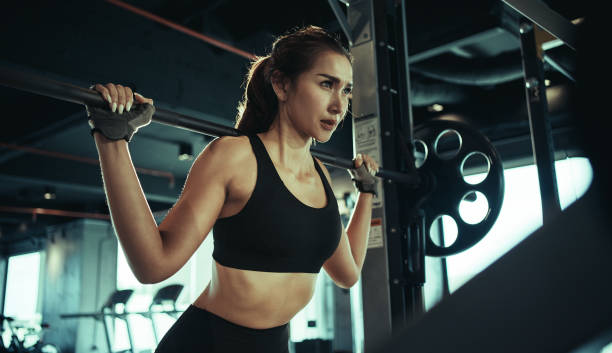
Lifting Weights for a Lean Physique
The misconception that lifting weights leads to the bulkiness
One of the most significant misconceptions about weightlifting is that it leads to bulkiness. The truth is weightlifting can help you lose fat and get lean. Resistance training helps you build muscle, which in turn helps you burn more calories at rest. This can help you achieve a toned, lean physique over time. However, it’s essential to approach weightlifting correctly to avoid bulkiness.
How weightlifting helps you lose fat and get lean
Weightlifting helps you lose fat and get lean by building muscle mass and increasing your metabolic rate. Muscle tissue burns more calories than fat tissue, meaning the more muscle you have, the more calories you burn at rest. This can help you achieve your weight loss and body composition goals.
The Role of progressive overload in muscle growth
You must challenge your muscles with progressively heavier weights over time to build muscle effectively. This concept is known as progressive overload. Each time you work out, you should aim to lift slightly heavier weights or perform slightly more repetitions than last. This gradual increase in workload is what leads to muscle growth over time.
Tips for incorporating weightlifting into a lean-focused workout routine
If you want to incorporate weightlifting into a lean-focused workout routine, there are a few tips to keep in mind:
– Focus on compound exercises that work for multiple muscle groups simultaneously, such as squats, deadlifts, and bench presses.
– Use weights that are challenging but still allow you to maintain proper form.
– Aim for 8-12 repetitions per set to promote muscle hypertrophy without bulking up.
– Remember to incorporate cardio into your workout routine as well. Cardio is essential for burning calories and reducing body fat.
Sculpt and Tone: 4 Steps for Toning Muscles Without Bulking Up
The goal of toning muscles without adding bulk
Toning your muscles means building lean muscle mass while reducing body fat. However, you might need more bulk to the process. Luckily for many women, there are ways to tone your muscles without getting bulky. You can achieve a toned, lean physique over time by choosing the right exercises, adjusting your rep ranges and weight selection, incorporating cardio and flexibility training, and eating a healthy diet.
Step 1: Choosing the right exercises
When toning your muscles without bulking up, you want to focus on exercises that target specific muscle groups without adding too much resistance. Some good exercises to include in your workout routine include:
– Bodyweight exercises like push-ups, squats, and lunges
– Resistance band exercises
– Light weightlifting with high reps
– Plyometric exercises like box jumps and jump squats
Step 2: Adjusting rep ranges and weight selection
To tone your muscles without adding bulk, you’ll want to choose weights that are challenging but not so heavy that you can only perform a few repetitions. Aim for a weight where you can comfortably perform 8-12 reps per set. This will help promote muscle hypertrophy without bulking up. Additionally, focus on high reps and low weights when lifting.
Step 3: Incorporating cardio and flexibility body weight training.
Cardio and flexibility training are essential components of a well-rounded workout routine. Cardio helps you burn calories and reduce body fat, while flexibility training helps improve your range of motion and prevent injury. Aim to incorporate at least 30 minutes of cardio daily, whether it’s jogging, cycling, or swimming. Additionally, take the time to stretch before and after your workouts to improve your flexibility.
Step 4: Proper nutrition for lean muscle development
A healthy, balanced diet is essential for building lean muscle mass and reducing body fat. Aim to eat a diet high in protein, which helps promote muscle growth, and includes plenty of fruits and vegetables for essential nutrients. Additionally, fuel your body with plenty of water for hydration and energy.
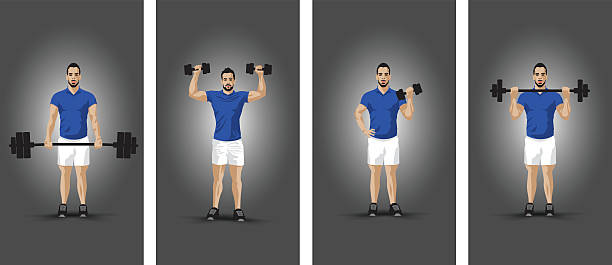
The Power of Resistance: Why You Shouldn’t Skip Resistance Training in Your Lean Body Pursuit
The benefits of resistance training for achieving a lean body
Resistance training, also known as weightlifting or strength training, is essential for achieving a lean body. It helps you build muscle mass and increase your metabolic rate, so you’ll burn more calories at rest. Additionally, resistance training helps improve your posture, balance, and overall strength, which can improve your quality of life over time.
Common misconceptions about resistance training and bulkiness
Some people worry that resistance training will bulge them, but this isn’t necessarily true. The amount of muscle mass you build depends on various factors, including muscle size, genetics, diet, and exercise habits. Additionally, you can adjust your workout routine to focus more on toning your muscles rather than building significant muscle mass.
How to incorporate resistance training into a lean-focused workout plan
To incorporate resistance training into a lean-focused workout plan, follow these tips:
– Choose exercises that target specific muscle groups.
– Use weights that are healthy weight that are challenging but not too heavy.
– Aim for a weight where you can comfortably perform 8-12 reps per set.
– Focus on compound exercises that work for multiple muscle groups at once.
– Incorporate cardio and flexibility training into your workout routine as well.
Tips for maximizing results while avoiding unwanted bulk
If you want to maximize your results while avoiding unwanted bulk, follow these tips:
– Focus on toning and defining your muscles rather than building significant muscle mass.
– Adjust your weight selection and rep ranges to promote muscle hypertrophy without bulking up.
– Incorporate cardio and flexibility training into your workout routine.
– Eat a healthy, balanced diet high in protein and includes plenty of fruits and vegetables.
– Stay hydrated and get enough sleep to support your body’s recovery and growth.
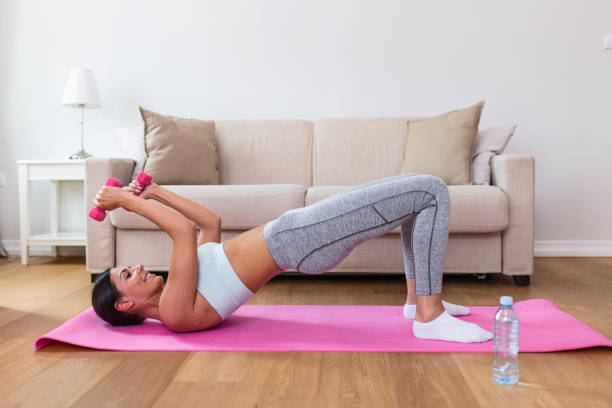
Exercises to Avoid: Steering Clear of Bulky Muscles
Let’s talk about what exercises to avoid if you want to stay lean. While weightlifting and strength training are great ways to build muscle, they can also lead to bulky muscles if not done correctly. So, what should you steer clear of?
Exercises like heavy squats, deadlifts, and bench presses should be used in moderation if your goal is a lean body. Instead, focus on exercises that build lean muscle mass, like bodyweight exercises, resistance band exercises, and lighter weights with higher reps.
Alternative exercises for building lean muscle mass include lunges, push-ups, pull-ups, rows, and shoulder presses with lighter weights. These exercises will help you lose muscle and build endurance and definition without adding bulk.
If you’re used to a heavier lifting routine, don’t worry! You can still adjust your workout routine to focus on leanness. Try incorporating more bodyweight exercises or using resistance bands instead of weights. By adjusting your routine, you can still build muscle and stay lean.
High Reps, Low Weight: The Key to Lean Muscles
Now that you know what exercises to focus on, let’s discuss how to perform them for optimal leanness. The key here is high reps and low weight. This approach prevents muscle bulkiness by promoting endurance and definition rather than raw strength.
So, what does a high-rep, low-weight workout look like? Here’s an example routine:
– 3 sets of 15 lunges on each leg
– 3 sets of 20 push-ups
– 3 sets of 12 rows with light dumbbells
– 3 sets of 10 shoulder presses with resistance bands
By focusing on higher reps with lighter weights, you’ll be sure to gain weight and build lean, toned muscles instead of bulky muscles. However, be sure to implement this training method safely. Start with lighter weights and gradually increase as you build endurance and strength.
Mastering the Lean Look: More Tips for Lean Muscles
While exercise is important for building a lean physique, it’s not the whole picture. Proper nutrition, recovery, and motivation also affect your fitness journey.
When it comes to nutrition, a balanced diet is key. Ensure you’re getting enough protein to support your muscle growth and plenty of fruits and vegetables for overall health. Remember to hydrate! Drinking plenty of water will keep you energized and help your muscles recover faster.
Recovery and sleep are also important for muscle development. Be sure to allow time for rest and recovery between workouts, and prioritize getting enough sleep each night. This will ensure your muscles have time to repair and grow after each workout.
Staying consistent and motivated in your lean-focused journey is crucial. Set achievable goals and track your progress, whether through measuring your body fat percentage or simply noting how many push-ups you can do. Celebrate your successes along the way, and don’t be too hard on yourself if you have setbacks. Consistency is key!
The Ultimate Workout for a Lean Body
So, what does the ultimate workout for a lean body look like? Here’s a sample routine that incorporates resistance training, cardio, and flexibility/mobility exercises:
Resistance training:
– 3 sets of 15 lunges on each leg
– 3 sets of 20 push-ups
– 3 sets of 12 rows with light dumbbells
Cardio:
– 30 minutes of running or biking
– 3 sets of 20 jumping jacks
Flexibility/mobility:
– 10 minutes of stretching and foam rolling
By combining all three elements – resistance training, cardio, and flexibility/mobility exercises – you’ll surely achieve a lean, toned physique. Just remember consistency and motivation are key to achieving your goals.
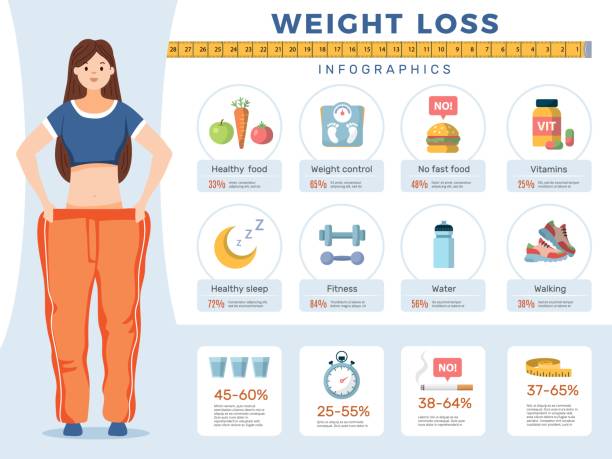
Calorie Caution: Don’t Overestimate Your Calories Burned
First, if you want to get lean, you need to pay attention to your calorie intake and output. This means that you want to ensure you’re not eating more calories than you’re burning throughout the day. Sounds simple enough.
But here’s the thing: many people overestimate the number of calories they’re burning through exercise and daily activities. This can lead to excessive calories, leading to weight, gaining muscle gain and even bulkiness.
So, ensure you’re accurately tracking your calorie expenditure using a fitness tracker or workout journal. Also, remember to keep an eye on your food intake! Use a food diary or an app to track your calories and ensure you’re not overeating.
Adjust your workout routines and nutrition plans accordingly as you progress and see results. Always keep an eye on your progress and adjust accordingly to avoid plateauing.
Heavy Lifting for a Lighter Look: Why Lifting Heavy is Crucial for Leanness
A common myth is that lifting heavy weights will make you look bulky. But the truth is that lifting heavy weights is essential for building lean and toned muscles. When you lift weights, you create tiny microscopic tears in your muscle fibres. As your body repairs these tears, your muscles become stronger and more defined.
Also, lifting heavy weights helps boost your metabolism, which means you’ll burn more calories throughout the day – even when you’re not working out!
So, feel free to incorporate heavy lifting into your workout routine. It’s one of the best things you can do for your body! Just make sure to use proper form and safety practices to avoid injury.
High Reps, Low Weight: What You Need to Know Before Starting
If you’re not quite ready for heavy lifting or looking for a slightly different approach to lean muscle development, try high reps and low weights. This means you’ll use lighter weights and do more reps per set.
This can be an excellent option for beginners or people interested in a different body type and of workout routine. However, it’s important to remember that you may see a different muscle growth and definition than you would with heavy lifting.
So, make sure you’re prepared for the potential drawbacks and considerations of this type of training. And as always, make sure to use proper form and technique to avoid injury.
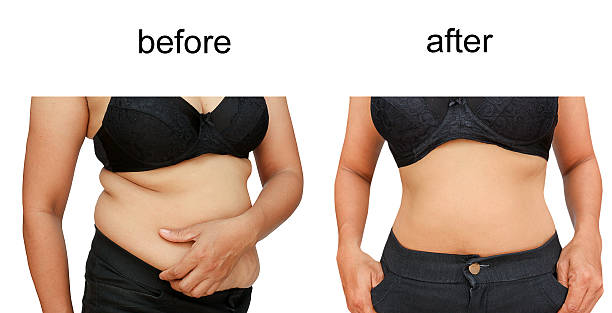
Shedding Fat for a Leaner Look: Strategies for Body Fat Loss
If you want to achieve a lean look, focusing on shedding excess body fat is essential. Even if you have lean muscles, if you have a layer of fat covering them, you won’t be able to see the results of your hard work!
Many practical strategies for losing body fat include cardio workouts, high-intensity interval training (HIIT), and reducing your calorie intake. It’s also important to watch your nutrition, ensuring you’re eating a balanced diet with plenty of protein to support your muscle growth.
Remember, losing body fat takes time and dedication. So be patient and consistent, and you’ll start to lose weight and see results over time.
Now, you know how to get lean and not bulky! Remember to pay attention to your calorie intake and output, incorporate heavy lifting into your workout routine, consider high reps and low weights, and focus on shedding excess body fat. With these tips, you’ll be on your way to achieving a lean and fit physique in no time!
Resistance Training Without the Bulk: What You Need to Know
Resistance training is a great way to build muscle and increase strength, but being careless can also lead to bulky muscles. Here are some fundamental principles for lean-focused resistance training:
– Focus on high repetition, low weight exercises. This means doing more reps with lighter weights instead of lifting heavy weights for fewer reps.
– Incorporate bodyweight exercises into your routine. Push-ups, squats, lunges, and planks are all great examples of bodyweight exercises that can build strength without adding bulk.
– Use resistance bands instead of weights. Resistance bands provide a similar resistance level as weights but are easier to control and can be adjusted to your fitness level.
– Avoid exercises that target a single muscle group too much. For example, bicep curls are great for building biceps, but too much focus on them can lead to an imbalanced physique and bulky arms.
Example workout routines and exercises:
Here’s an example of a lean-focused resistance training workout routine:
– Warm-up: 5-10 minutes of light cardio (jogging, jumping jacks, etc.)
– Circuit 1 (repeat 3 times):
– 10 push-ups
– 15 squats
– 20 lunges (10 on each leg)
– 30-second plank
– Rest for 1-2 minutes between each circuit
– Circuit 2 (repeat 3 times):
– 10-12 reps of lat pull-downs or rows
– 10-12 reps of chest press or flies
– 10-12 reps of tricep dips or kickbacks
– Rest for 1-2 minutes between each circuit
– Cool-down: 5-10 minutes of stretching
Tips for maximizing results while avoiding unwanted muscle bulk:
– Stay consistent with your routine. Aim to work out at least 3-4 times per week.
– Fuel your body with healthy, whole foods. A balanced diet with protein, healthy fats, and complex carbs will help your body build lean muscle.
– Don’t be afraid to take rest days. Your muscles need time to recover and rebuild after workouts.
– Listen to your body. If a certain exercise feels like causing too much muscle growth, it’s okay to modify or skip it altogether.

Cardio for a Lean Physique: Don’t Forget About Its Importance
Cardiovascular exercise is an important component of any fitness routine. Not only does it help improve your overall health, but it can also help you burn fat and maintain a lean physique. Here are some types of cardio exercises that promote leanness:
– High-intensity interval training (HIIT). This involves short bursts of intense activity (like sprints or jump squats) followed by rest periods.
– Running or jogging. This is a great way to increase your heart rate and burn calories.
– Cycling. Whether indoors on a spin bike or outdoors on a road bike, cycling is a low-impact, high-cardio exercise that can build endurance.
– Swimming. This full-body workout can be a great way to mix up your routine.
How to incorporate cardio into a lean-focused workout plan:
– Aim for 30-60 minutes of cardio daily, most days of the week.
– Mix up your cardio routine to keep things interesting and challenging.
– Combine cardio with resistance training for optimal results.
Balancing cardio with resistance training for optimal results:
– There’s no one-size-fits-all answer to how much cardio you should do versus how much resistance training you should do. It depends on your fitness goals and preferences.
– Generally speaking, a good balance is 2-3 days of resistance training per week, with 2-3 days of cardio mixed in.
– Always listen to your body and adjust your routine as needed.
The Perfect Blend: Combining Resistance Training and Cardio for a Lean Body
Now that you know the benefits of resistance training and cardio, it’s time to figure out how to blend them for maximum results. Here are some strategies for effectively blending these two types of exercise:
– Alternate between resistance training and cardio days. For example, you could do resistance training on Monday, Wednesday, and Friday and cardio on Tuesday and Thursday.
– Combine resistance training and cardio in the same workout. For example, you could do a circuit with resistance and cardio exercises (like jump rope or burpees).
– Experiment with different workouts to find what works best for you.
Sample workout plans that incorporate both resistance training and cardio:
Here’s an example of a workout routine that incorporates both resistance training and cardio:
– Warm-up: 5-10 minutes of light cardio (jogging, jumping jacks, etc.)
– Resistance training (choose 3-4 exercises):
– Squats (10 reps)
– Lung es (10 reps on each leg)
– Chest press (10 reps)
– Lat pull-downs or rows (10 reps)
– Rest for 1-2 minutes between each set
– Cardio (choose 2-3 exercises):
– Jumping jacks (30 seconds)
– Mountain climbers (30 seconds)
– High knees (30 seconds)
– Rest for 1-2 minutes between each set
– Repeat the resistance training and cardio circuit 3-4 times
– Cool-down: 5-10 minutes of stretching
Tips for staying motivated and consistent in your pursuit of a lean body:
– Find a workout buddy or accountability partner to keep you on track.
– Mix up your routine to keep things interesting.
– Reward yourself for reaching fitness milestones (like running a new distance or hitting a new weight-lifting goal).
– Focus on how exercise makes you feel rather than solely on how it makes you look.
Personalized Guidance: Hiring a Personal Trainer to Avoid Bulky Muscles
If you’re worried about getting too bulky or want personalized guidance on your fitness routine, consider hiring a personal trainer. Here are some ways a personal trainer can help you avoid getting bulky:
– They can help you create a personalized workout routine focusing on lean muscle development.
– They can teach you proper form and technique for exercises, which can help prevent injury and ensure you’re not accidentally adding bulk where you don’t want it.
– They can provide accountability and motivation to help you stick to your workout routine.
Tips for finding a qualified personal trainer with experience in lean-focused weight training:
– Look for personal trainers who have experience working with clients who have similar goals as you.
– Ask for references or testimonials from past clients.
– Interview potential trainers to ensure their training style and personality are a good fit for you.
Setting goals and tracking progress with your personal trainer:
– Work with your trainer to set specific, measurable goals for your fitness journey.
– Track your progress to stay motivated and see how far you’ve come.
– Adjust your routine as needed to keep making progress towards your goals.

No Equipment Needed: Best Bodyweight Exercises for a Lean Physique
You don’t need fancy gym equipment to tone your muscles when it comes to getting lean. You can use your body weight to build strength and lean muscle definition. Here are some great bodyweight exercises that can help you achieve a lean physique:
– Squats: Stand with your feet hip-width apart and your toes pointing forward. Bend your knees, lowering your hips as if you were sitting in a chair. Make sure your knees don’t go past your toes. Stand back up and repeat.
– Lunges: Step forward with one foot and bend at the knee until your thigh is parallel to the ground. Step back and repeat with the other leg.
– Push-ups: Start in a high plank position with your hands shoulder-width apart. Lower yourself until your chest touches the ground, and push back up.
– Plank: Start in a high plank position and hold for as long as possible. Make sure your hips don’t sag.
– Jumping Jacks: Jump your feet out wide while raising your arms overhead, then jump back to the starting position.
To incorporate bodyweight exercises into a lean-focused workout routine:
- Create a circuit of these exercises.
- Do each exercise for 30 seconds to 1 minute, then rest for 30 seconds before moving on to the next exercise.
- Repeat the circuit 2-3 times, increasing the time or intensity as you get stronger.
If any exercise feels too difficult, try modifying it. For example, if regular push-ups are too hard, you can do them from your knees. If lunges are too challenging, hold onto a chair or wall for support.

Fueling Your Lean Body: How to Eat Healthy Without Bulking Up
No matter how hard you work out, you will only see a lean physique if you eat the right foods. Here are some tips for creating a healthy, lean-focused meal plan:
– Eat plenty of protein: Foods like chicken, fish, eggs, and tofu will help you build lean muscle without adding bulky mass.
– Load up on veggies: Vegetables are low in calories and nutrients, making them the perfect food for a lean body.
– Avoid processed foods: Chips, candy, and soda are full of empty calories that won’t support your lean physique goals.
– Stay hydrated: Drinking water can help you feel full and keep you hydrated during workouts.
Here’s a sample meal plan that incorporates these tips:
– Breakfast: Scrambled eggs with spinach and a slice of whole-grain toast
– Snack: Carrots and hummus
– Lunch: Grilled chicken salad with mixed greens, tomatoes, and cucumbers
– Snack: Apple and peanut butter
– Dinner: Baked fish with roasted veggies and quinoa

Dance Your Way to Lean Legs: Is Dancing an Effective Workout?
If you’re not a fan of traditional workouts, dancing can be a great way to get lean legs. Here are some different dance styles that can help:
– Ballet: Ballet moves are great for toning your legs and improving your posture.
– Hip hop: Hip hop dancing is a high-energy workout that can help you burn calories and build muscle.
– Zumba: Zumba mixes Latin dances like salsa and samba. It’s fun to get your heart rate up and tone your entire body.
Try taking a class or finding a dance workout video online to incorporate dance into your workout routine. You can also incorporate dance moves into your circuit workout. For example, do 1 minute of jumping jacks and 1 minute of salsa dancing.
Frequently Asked Questions: How to Avoid Bulky Legs When Working Out
Q: Will lifting weights make my legs bulky?
A: It’s possible, but only if you’re lifting very heavy weights and doing a lot of volume. Lifting lighter weights and focusing on high reps makes you more likely to get lean, toned legs.
Q: What exercises can I do to avoid bulky legs?
A: Lunges, squats, and leg presses are great exercises for toning your legs without adding bulk. Focus on using a lighter weight of weights and higher reps.
Q: How can I balance my upper and lower body workouts?
A: Ensure you’re working your upper body and lower body during your workouts. Incorporate exercises like push-ups, pull-ups, and shoulder presses into your routine. You can also alternate between upper and lower-body workouts on different days.
Conclusion
Overall, getting lean and toned without getting too much bulky muscle, is possible with the right approach. Remember to focus on high-rep, low-weight resistance exercises, combine cardio with resistance training, stay consistent, and consider getting personalized guidance from a personal trainer. Good luck on your fitness journey!


Leave a Reply